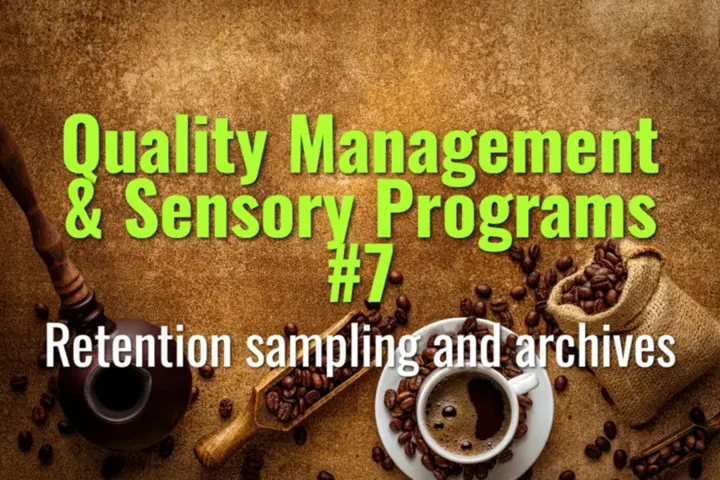Retention sampling and archives
How to establish retention sampling and archive systems for green, roasted, and brewed coffee to support quality control, traceability, and dispute resolution.
- Coffee Basics Nerds
- 2 min read
Article 7 of 12 in Quality Management & Sensory Programs/

Why Retention Sampling Matters
- Provides a reference point if quality complaints or inconsistencies arise.
- Allows side-by-side comparison across production runs.
- Strengthens traceability for certifications and audits.
What to Archive
- Green Coffee Samples:
- 200–500 g per lot.
- Store in sealed, labeled containers.
- Reference for claims about defects or mislabeling.
- Roasted Coffee Samples:
- 100–200 g per batch.
- Stored in sealed valve bags or airtight jars.
- Used to verify roast profile consistency and aging effects.
- Brew Samples (Optional):
- For R&D or disputes.
- Frozen aliquots of brewed coffee can support sensory or chemical analysis.
Labeling & Documentation
- Include lot code, roast date, batch number, weight, and storage conditions.
- Maintain digital logs linking samples to QC notes, cupping scores, and production data.
Storage Conditions
- Green: Cool, dry, sealed containers away from light.
- Roasted: Room temperature, airtight packaging, rotated every 2–4 weeks.
- Brewed: Deep freeze (if stored).
Archive Duration
- Green coffee: Until end of contract or shipment cycle.
- Roasted coffee: At least 3–6 months.
- Critical lots (competition or premium): Longer retention for verification.
Benefits
- Traceability: Match complaints or cupping inconsistencies to specific batches.
- Training: Archived samples demonstrate how coffee evolves with age.
- Audit Readiness: Supports compliance with certifications (Fairtrade, Organic, etc.).
Example SOP
- Pull sample from every production batch.
- Label with unique code and seal.
- Log in QC database.
- Store in organized bins by date.
- Rotate archive when shelf life expires.
Summary
Retention sampling and archives act as a safeguard in coffee quality management. By systematically storing and labeling green, roasted, and brewed samples, businesses gain tools for traceability, dispute resolution, training, and continuous improvement.